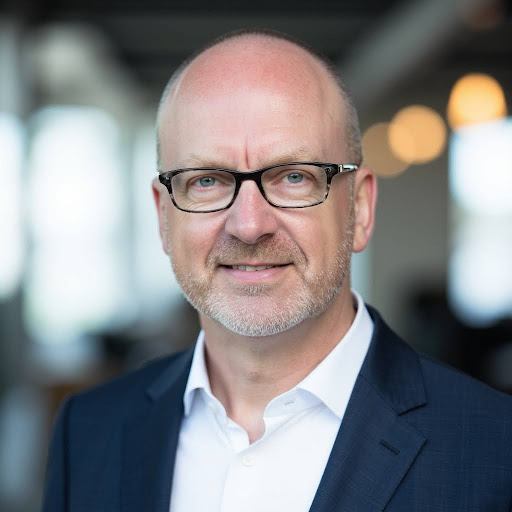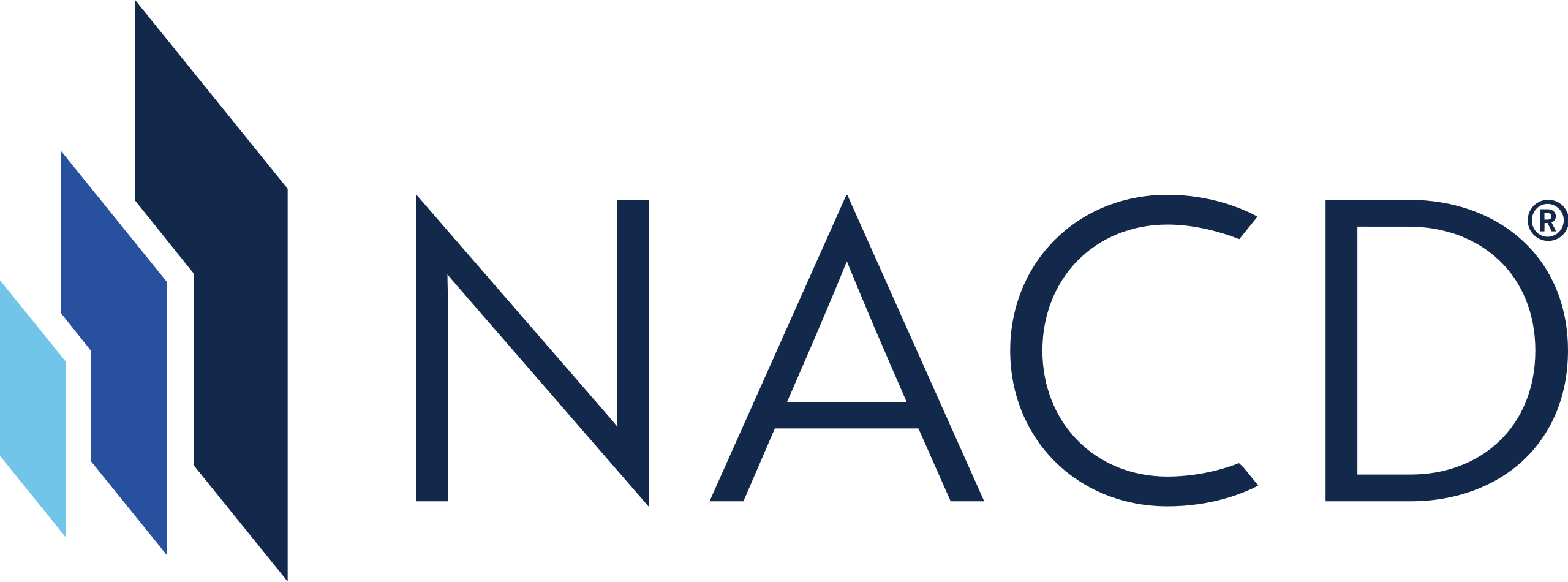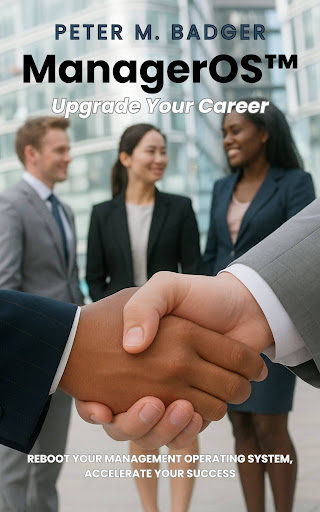Transformation and Operational Leader Applying Gen AI & Agentic AI to Streamline Business Processes
- Book Now Available ManagerOS - A Practical Guide for First-Time Managers
- Orchestrated a $2.1B company divestiture
- Delivered a $65M+ strategic project portfolio
- Raised $40M+ in global investor capital
- Secured $16.5M venture funding and drove $7.2M in software sales





















Core Skills
Growth-focused corporate leader, entrepreneur, and author who has led large-scale transformations, global expansions, and technology initiatives while pioneering the integration of AI into business operations. He combines decades of leadership experience with a pragmatic approach to governance, team-building, and innovation.
Generative and Agentic AI and Process Automation
Generative and Agentic AI and Process Automation
AI Governance and Risk Management
Enterprise Transformation Strategy
Operational Leadership
Business Process Optimization
Program and Project Portfolio Management
Cross-functional Team Leadership and Development
Asset Management
Investment Banking
Enterprise Software
Biotech
Real Estate
About
“It’s not humans versus AI; it is humans and AI on the same team – that’s where real innovation happens.”
This philosophy guides my approach to blending proven methodologies with next-generation tools. My work remains rooted in Technology Deployment, Operational Improvement, and M&A Integration, while also exploring how AI can strengthen strategic planning, cultivate innovation ecosystems, and reimagine business operations for sustainable growth.
Emerging AI Integration:
- Applying Generative and Agentic AI frameworks to transform operational processes, improve efficiency, and strengthen enterprise scalability.
- Harnessing intelligent automation to streamline business processes and workflows.
- Leveraging AI-driven insights to complement human decision-making and advance enterprise transformation.
Operational Excellence
Architects enterprise-wide operational systems that turn chaos into competitive advantage, governing $43M+ portfolios and orchestrating billion-dollar transformations that others consider impossible—all while maintaining minimal operational disruption.
AI Innovation Catalyst
Pioneering the future of operations by deploying Generative and Agentic AI frameworks that don’t just improve efficiency—they fundamentally reimagine how enterprises operate, creating unfair advantages through technology others haven’t mastered yet.
Acquisition Specialist
Masters the art of seamless M&A integration, leading acquisitions and divestitures worth billions while ensuring minimal customer impact—because successful deals aren’t just about closing, they’re about flawless execution afterward.
Strategic Transformation
Turns ambitious visions into executable reality, delivering $100M+ enterprise transformations with surgical precision by designing methodologies that achieve 100% delivery consistency where most organizations fail.
Global Operator
Thrives in complexity that stops others, building market leadership across Asia-Pacific, Europe and the Americas by turning regulatory mazes and cultural differences into strategic opportunities rather than obstacles.
Team Builder
Builds and scales elite operational teams from 15 to 300+ people who consistently outperform, then codifies that wisdom into ManagerOS—a proven framework that helps other leaders replicate this success at scale.
Case Study
Allspring: Head of Program Management
Led Industry-leading Divestiture
Situation:
When Wells Fargo divested its Asset Management division, creating Allspring Global Investments, it was one of the most complex transitions in the industry. The divestiture was valued at $2.1B and required disentangling operations from Wells Fargo while standing up Allspring as a fully independent company. The scope was massive — impacting over 1,500 employees, 700 vendors, 500 applications, and 120 services. The risk of disruption to clients, regulators, and employees was extremely high.
Task:
I was asked to head the divestiture program and ensure that the transition was executed smoothly, on time, and with minimal operational disruption. My responsibility was to orchestrate the work of more than 260 contributors across business, technology, and operations, while maintaining regulatory compliance and business continuity for global clients. The challenge was balancing speed and precision in an environment where any misstep could erode client trust or impact financial performance.
Action:
I designed and executed a comprehensive program management structure that broke the divestiture into coordinated work streams across technology, vendor management, HR, and operations. I established governance forums with executive sponsors, set up risk and issue management processes, and implemented clear milestones with accountability for each functional lead. I also prioritized communication — running regular briefings for leadership, providing status updates to the board, and ensuring employees had clarity about changes. To manage complexity, I used portfolio dashboards to track dependencies and escalated critical decisions quickly to maintain momentum.
Results:
The divestiture was executed successfully, with Allspring fully separated from Wells Fargo and operational as an independent company on schedule. The transition of 1,500+ personnel, 700+ vendors, 500+ applications and data feeds, and 120+ services was completed with minimal disruption to clients and ongoing operations. Our private equity owners, the board, and leadership recognized the program as a model for managing large-scale divestitures, and the successful outcome reinforced confidence in Allspring’s ability to operate independently from day one.
Case Study
Allspring: Head of Program Management
Standing up a Strategic Program Office for Enterprise Transformation
Situation:
When I joined Allspring, the PMO function was limited, and there was no processes and limited capabilities in place to drive enterprise transformation. The firm had ambitious goals, including executing multiple enterprise-wide transformations and dozens of interdependent initiatives. Without a strong project management function, there was a risk of fragmented execution, inconsistent delivery practices, and a lack of accountability across programs and projects.
Task:
My task was to build and lead a high-performing PMO team that could deliver on the firm’s transformation agenda. This meant not only recruiting and developing the right talent, but also shaping a culture of accountability, collaboration, and results. The team needed to manage four enterprise-wide programs with more than 30 interdependent initiatives in a way that would boost efficiency, reduce risk, and strengthen margins.
Action:
I recruited and developed a team of 15 program and project management professionals, carefully balancing experienced hires with internal talent. I established clear roles, responsibilities, and governance processes, and I trained the team on best practices in both Agile and Waterfall delivery. I also created a culture of collaboration by running regular cross-program reviews, setting performance metrics, and mentoring team members to grow into leadership roles. By aligning the team’s work with strategic business priorities, I ensured they were seen as trusted partners rather than just project managers.
Results:
The PMO quickly became a cornerstone of transformation delivery at Allspring. Together, we are successfully executing four enterprise-wide transformation programs comprising more than 30 interconnected initiatives, all of which are driving measurable business impact. Our work is improving operational efficiency, reducing risk across functions, increasing top line growth, and contributing directly to stronger profit margins. The team has earned recognition from senior leadership as a high-performing function that consistently delivers results and partners to enable the firm’s broader growth strategy.
Case Study
Framehawk: Co-founder & CEO/COO
Founder-to-Acquisition Tech Entrepreneur
Situation:
In 2008, I co-founded Framehawk, a software startup focused on solving a critical challenge in enterprise mobility: how to deliver high-performance, secure virtual desktops and applications over unreliable mobile and wireless networks. At the time, enterprise IT was beginning to embrace mobility, but existing technologies couldn’t meet performance or security expectations in regulated, high-demand industries like finance and government. To seize this market opportunity, we needed to innovate quickly, scale operations, and prove credibility against larger, more established players.
Task:
As Co-founder and CEO/COO, I was responsible for leading the company, shaping sales, marketing, and operational strategy, and driving market expansion. My mandate was threefold: (1) secure venture funding to fuel accelerated development, (2) build and scale a high-performing organization capable of competing in enterprise markets, and (3) deliver both revenue growth and a viable exit strategy through acquisition or IPO.
Action:
My co-founder and I raised $16.5M in Series A and B funding from top-tier venture capital firms, which enabled us to accelerate product development and expand into target markets. I grew the organization to a 55-person team, including six direct reports, and implemented scalable business processes and governance frameworks to manage rapid growth while maintaining operational resilience and customer satisfaction. To commercialize the product, I developed a go-to-market strategy targeting regulated, performance-sensitive sectors, securing $7.2M in software sales within two years. Finally, I led negotiations for Framehawk’s acquisition by Citrix Systems, overseeing full M&A due diligence and integration planning across strategic, operational, and cultural dimensions.
Results:
Framehawk quickly became recognized as a leader in enterprise mobility solutions, delivering measurable value to select enterprise clients in regulated industries. The $16.5M in venture funding and disciplined operational execution enabled us to achieve rapid revenue growth and pique the interests of the public company incumbents. The acquisition by Citrix validated our strategy, rewarded investors and employees, and ensured our technology reached a global enterprise audience as part of Citrix’s portfolio. For me personally, it was the culmination of building a company from the ground up, driving both innovation and operational excellence to achieve a successful exit.
Case Study
Barclay's Global Investors
Created an enterprise IT strategy and Strategic Program Office (SPO), delivering a 3-year technology roadmap
Situation:
When I joined Barclays Global Investors (BGI) as Principal and Head of IT Strategy, IT PMO, and Enterprise Architecture, the firm was experiencing rapid global growth, managing $1.5T in assets and pioneering ETFs through its iShares business. Despite its success, BGI’s IT organization lacked a centralized strategy and consistent governance. Technology initiatives were being pursued regionally, often in silos, with limited visibility or alignment to enterprise priorities. The absence of a strategic portfolio and standardized processes created inefficiencies, duplication of effort, and risk of misaligned investments across a global IT workforce of 1,200+ people.
Task:
My mandate was to establish an enterprise-level IT strategy, stand up a global PMO governance function, and create an architecture framework that aligned innovation with scalable growth. I needed to work with IT and business leadership to deliver a multi-year technology roadmap, implement disciplined execution processes, and strengthen leadership capability to support 37 enterprise programs. Ultimately, the goal was to ensure BGI’s technology investments delivered measurable value while enabling the firm to scale as one of the world’s largest asset managers.
Action:
I created BGI’s first enterprise IT portfolio, consolidating initiatives into a $65M transformation portfolio with clear governance. I established program prioritization criteria, standardized reporting and risk management, and introduced executive dashboards to provide visibility for decision-making. In parallel, I developed a 3-year technology roadmap that balanced infrastructure modernization, application rationalization, and global scalability, ensuring alignment with business strategy. To strengthen delivery, I recruited and developed senior PMO leaders, instituted cross-program leadership forums, and embedded performance frameworks to drive accountability. I also built alignment with business-aligned CTOs globally, fostering collaboration across geographies and breaking down silos between technology and business functions.
Results:
The changes I implemented transformed how BGI managed technology investments and delivered large-scale programs. For the first time, executives had a unified view of the IT portfolio, enabling data-driven prioritization and disciplined execution. The 3-year technology roadmap became the guiding framework for innovation and scalability, improving operational efficiency and reducing duplication across global units. Delivery performance improved significantly, risks were identified earlier, and cross-functional integration strengthened execution efficiency. Ultimately, these efforts positioned BGI to execute its strategic transformation agenda more effectively and contributed to its successful integration into BlackRock following the acquisition.
Testimonials
What People Say
“Peter brings order and clarity to the most complex transformation agendas. He directs enterprise-wide PMO operations that govern complex strategic portfolios, consistently delivering high-value initiatives across the business.”
“Few leaders can navigate divestitures at scale. Peter orchestrated a $2.1B divestiture with precision, ensuring a seamless global transition of people, vendors, and systems with minimal business impact.”
“Peter doesn’t just build teams, he builds resilience. By coaching and empowering high-performing teams, he strengthens organizational agility and positions companies for sustained growth.”
“As the author of ManagerOS: Upgrade Your Career, Peter distills 35+ years of experience into a practical framework that helps managers upgrade their operating system and take their career to the next level.”
Boards

I actively engage in two premier leadership communities—the National Association of Corporate Directors (NACD) and the Operators Guild—where I collaborate with senior executives on governance, strategy, and operational excellence. Through NACD, I maintain advanced governance expertise and stay at the forefront of emerging boardroom topics such as AI oversight, cyber risk, and stakeholder capitalism. As a member of the Operators Guild, I work alongside CEOs, CFOs, and investors from PE- and VC-backed firms to solve complex scaling challenges and strengthen organizational growth. Drawing on this experience, I am available to contribute to for-profit and nonprofit boards, bringing deep expertise in business transformation, AI governance, and leadership development to help organizations thrive in a rapidly changing landscape.

NACD (National Association of Corporate Directors)
Member

Operators Guild
Member | Invite-Only Elite Operations Community
Book
The must-have playbook for first-time managers and struggling managers who want to thrive, not just survive, in today’s workplace.

Most management books jump straight into how to manage others. But the truth is: great management starts with managing yourself. ManagerOS™ gives you a proven framework to build the habits, skills, and confidence you need to upgrade your career and manage with impact.
Inside, you’ll learn how to master the five essential management disciplines:
Self-Management — Boost your focus, productivity, and emotional control so you can perform at your best.
Managing Up — Build influence with your boss and senior leaders without “kissing up.”
Managing Subordinates — Transition from peer to leader, motivate performance, and handle tough conversations.
Managing Teams — Create a culture of accountability and results that runs smoothly, even when you’re not in the room.
Managing Remote Employees — Lead distributed teams with clarity and trust in a world of hybrid and remote work.